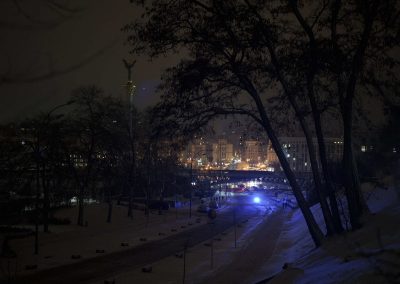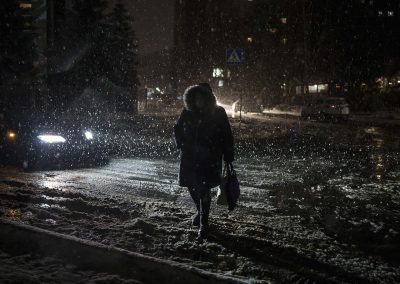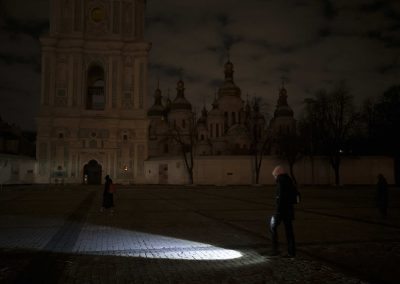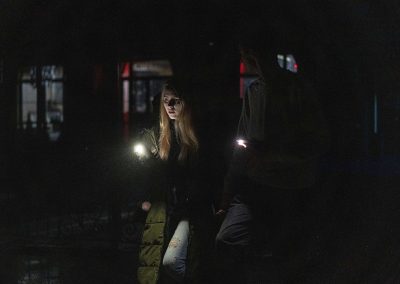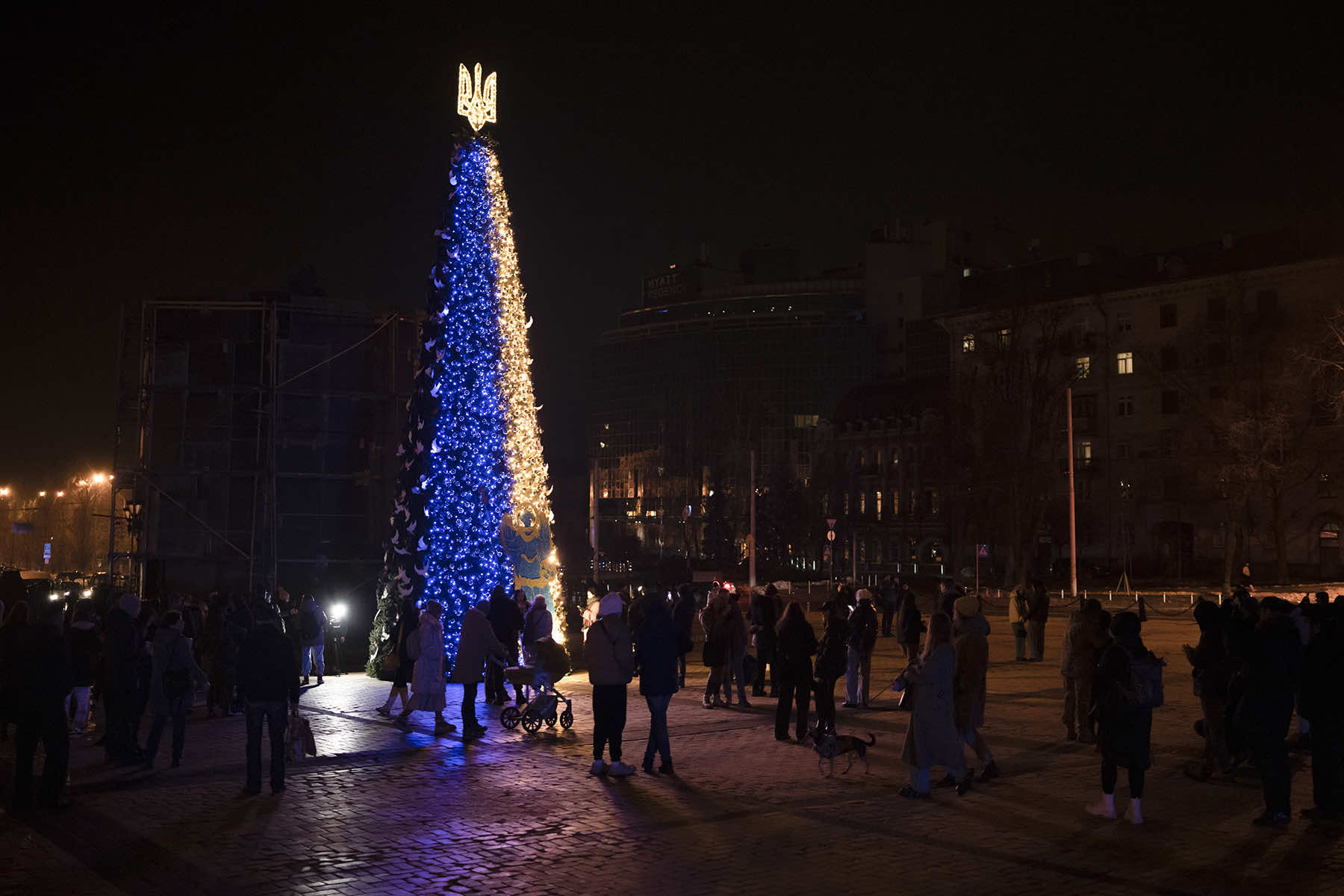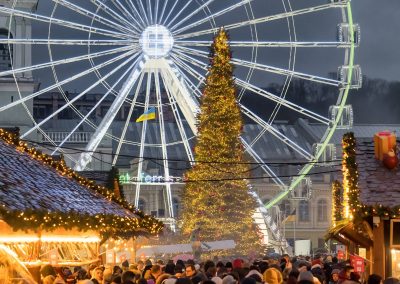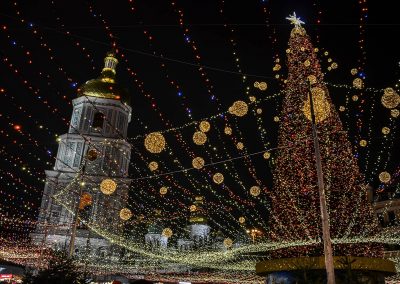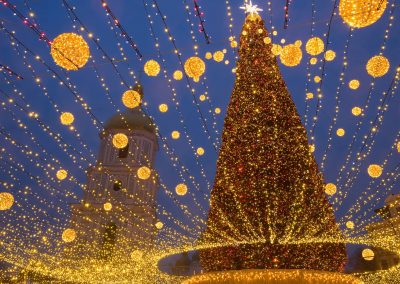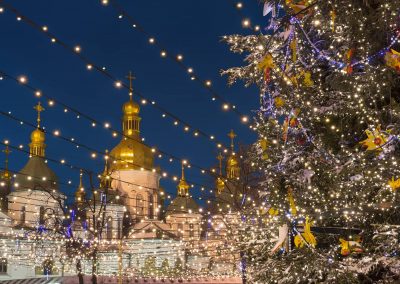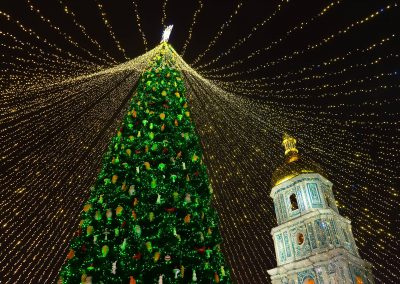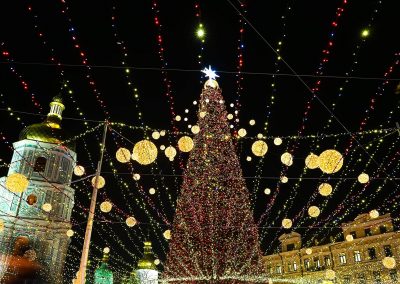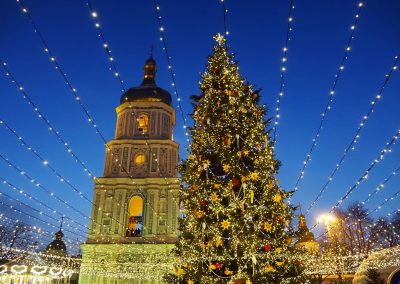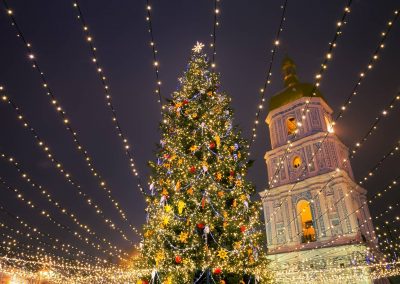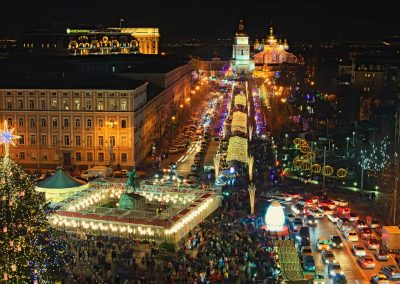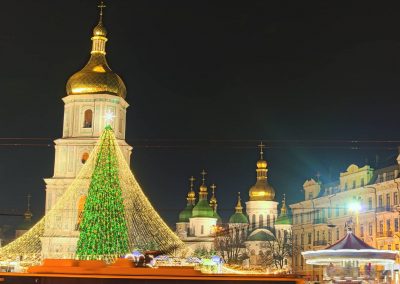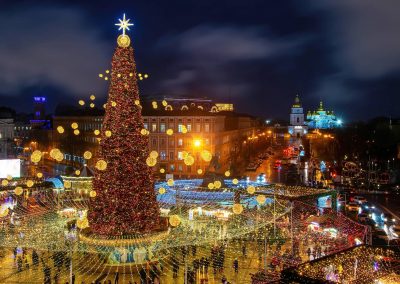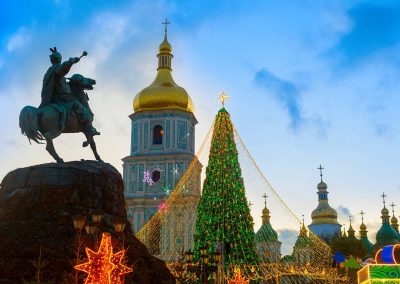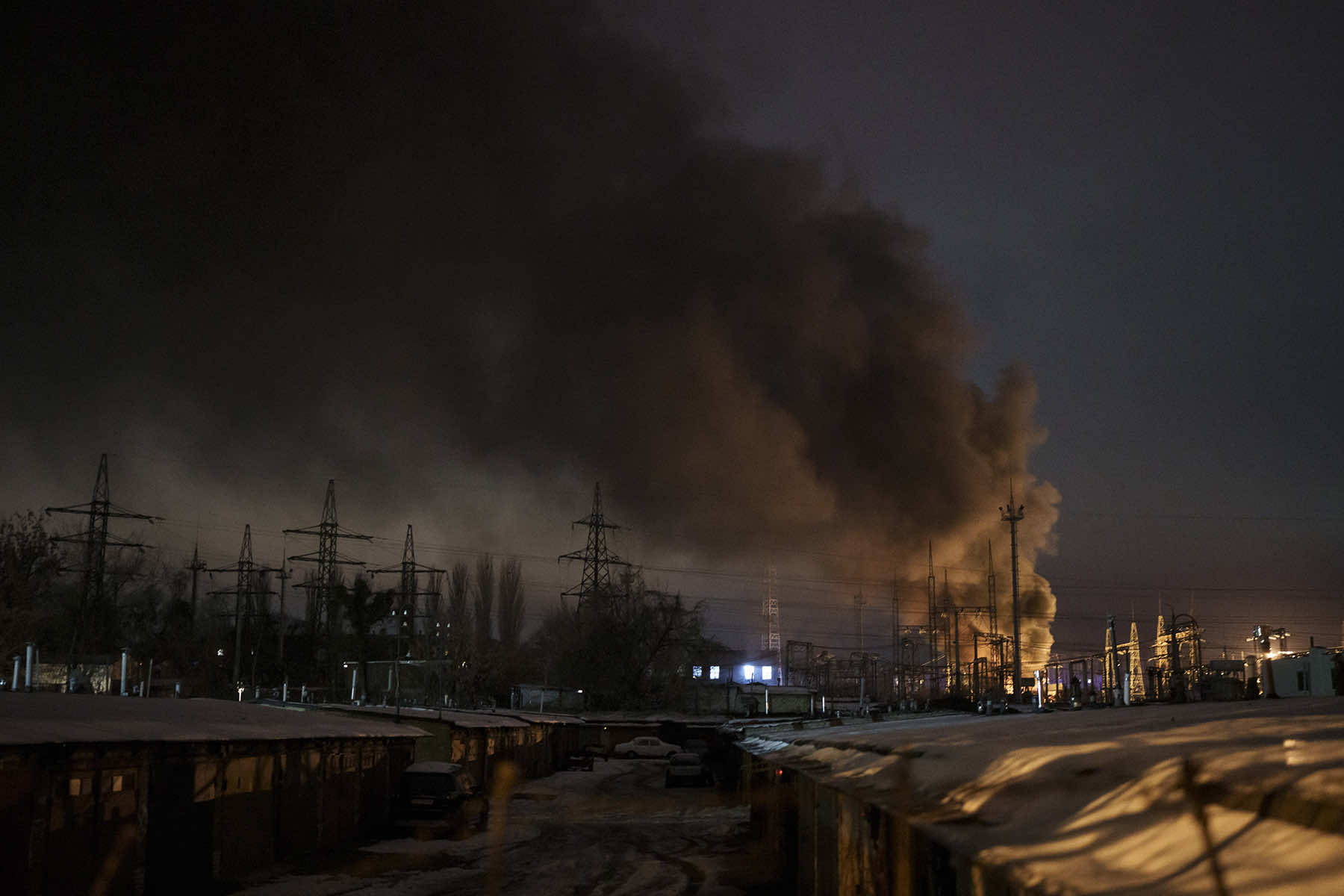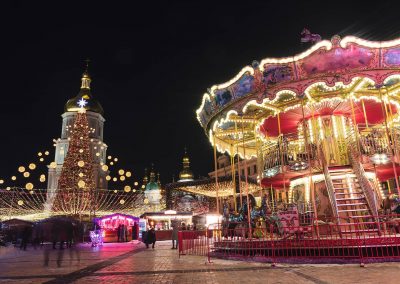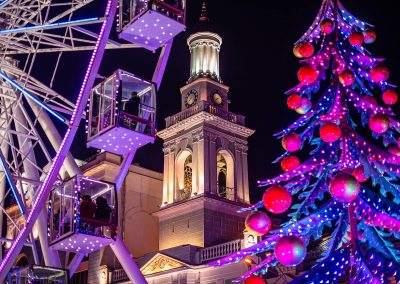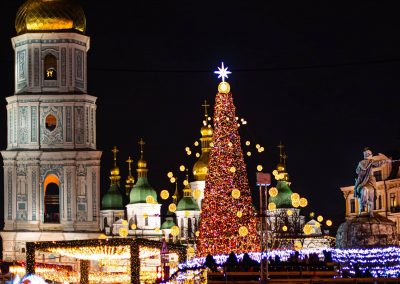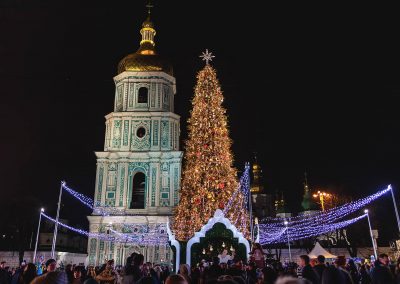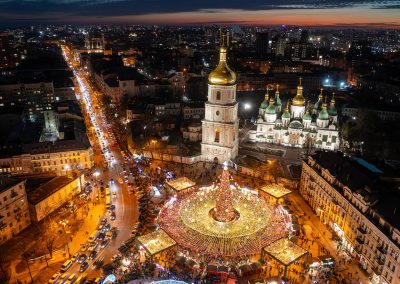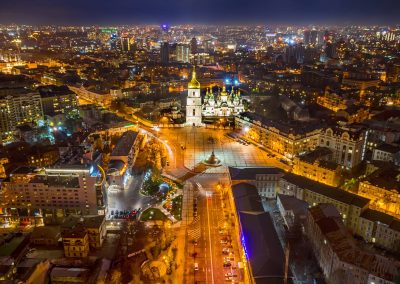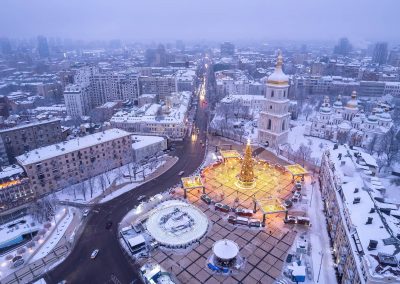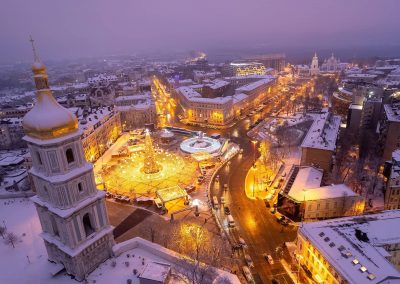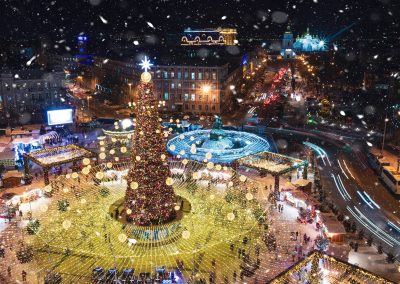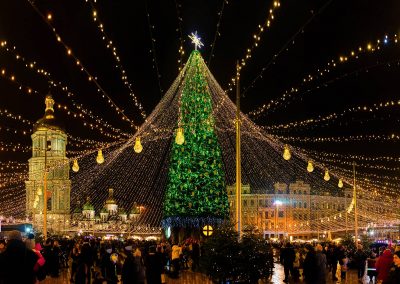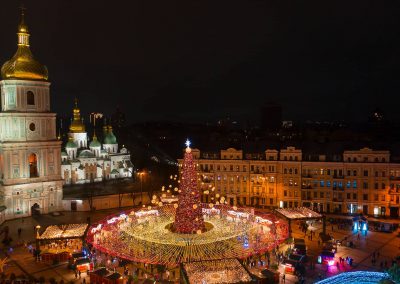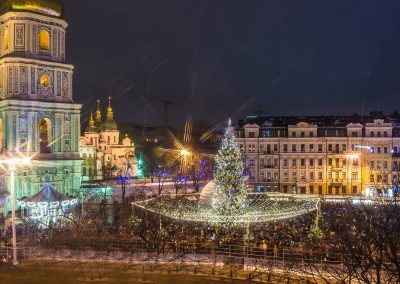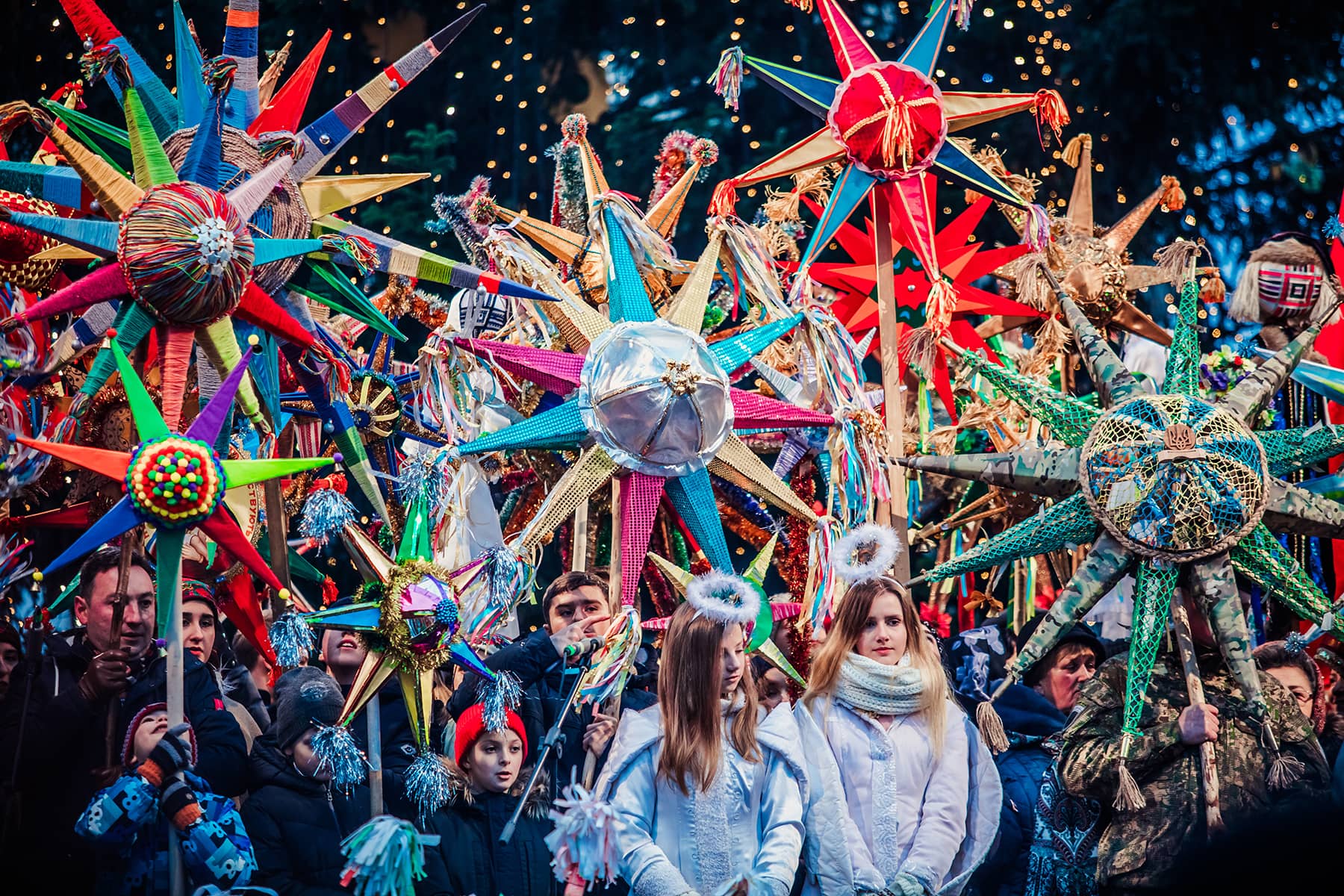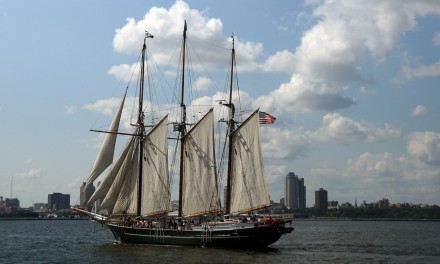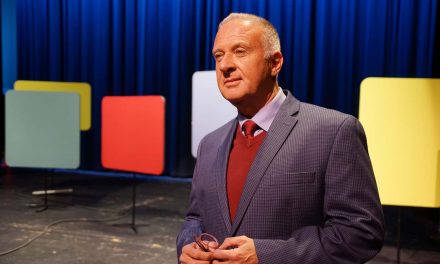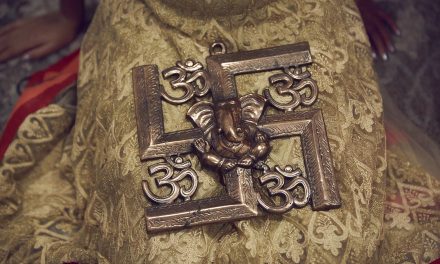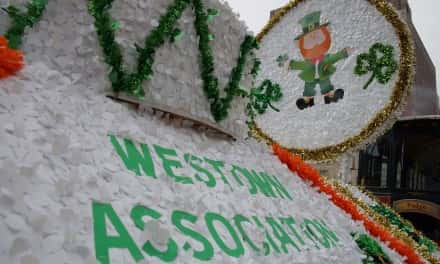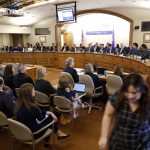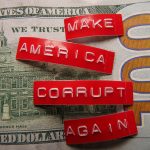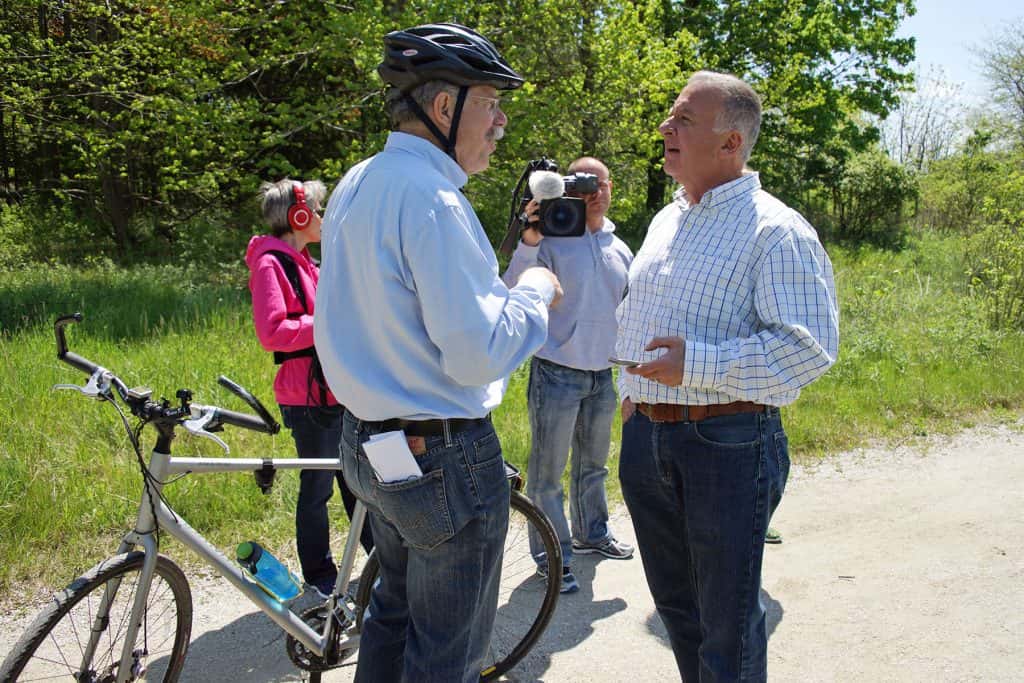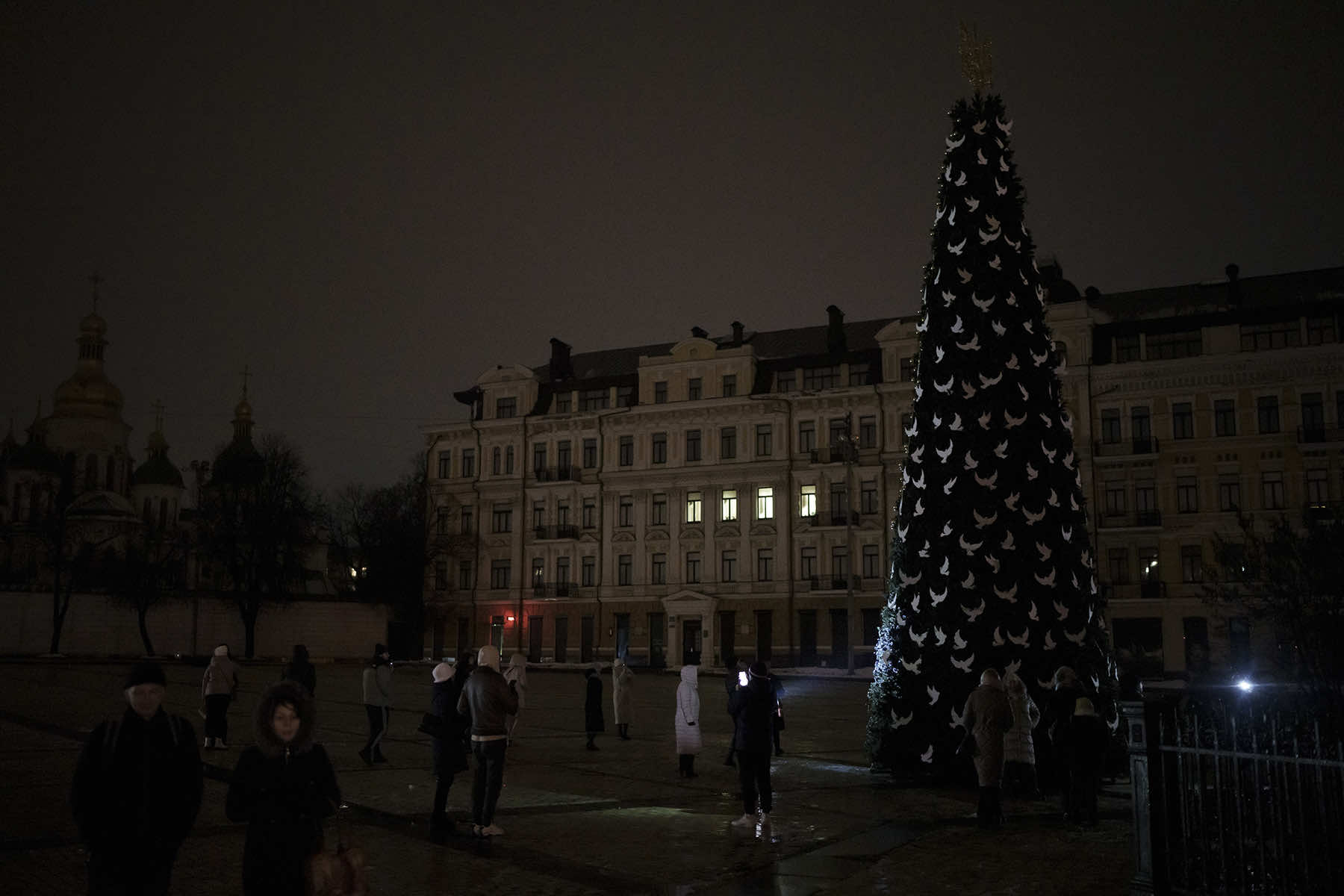
Just a year ago, Sophia Square in Kyiv was all about the big Christmas tree and thousands of lights spreading over the plaza. These final days of 2022, in the middle of a war that has ravaged the country for 10 months, a more modest tree stands there, its blue and yellow lights barely breaking the gloom of the square that is otherwise dark apart from the headlights of cars.
In recent months, Russia has been targeting the energy infrastructure, aiming to cut electricity and heating to Ukrainians, as the freezing winter advances. And although the Ukraine government tries to move as fast as it can, it has been practically impossible to restore power for every single person in the country, including the more than 3 million residents of the capital.
There are days when streets in Kyiv’s downtown have light, but the authorities have imposed some restrictions and scheduled power cuts, meaning that there is no traditional gleaming city during the Christmas season.
But even in these gloomy moments, some people have decided to show their determination and rescue whatever they can these holidays — like the Christmas tree, still standing proud even if it does not have the brightness of recent years.
Kyiv’s Mayor, Vitali Klitschko, announced the installation of the Christmas tree, saying it was going to be named the “Tree of Invincibility.”
“We decided that we wouldn’t let Russia steal the celebration of Christmas and New Year from our children,” he said. The name, he added, was “because we Ukrainians cannot be broken.”
The “Tree of Invincibility” was inaugurated on December 19, the same day that Russia launched a drone attack against Kyiv, but damaged only a power plant that didn’t caused a massive blackout in the city.
Unlike previous years, when along with the tens of thousands of bulbs, Sophia Square was full of music and cheerful people, now the only noise on the plaza is the sound of a generator powering the lights of the 40 foot tree. On top of it, there is no star of Bethlehem’s but instead a trident, Ukraine’s symbol.
Before Kyiv’s government decided to install the tree, there was some debate about whether it was appropriate in a year that brought so many tragedies and horrors. Similar discussions happened all across the country, and some regions decided not have trees. But now, some people do like the initiative.
“We are grateful that we can see at least something in such times,” said Oleh Skakun, 56, during the unveiling of the tree on December 19.
He said that every December 19, his wife’s birthday, they used to go to see the Christmas tree in the southern city of Kherson, not far from their home. Not this year, because their house, on the left bank of the Dnieper river, is occupied by Russian forces, and they had to flee in August to Kyiv.
But despite their sadness, Skakun said that they wanted to keep the tradition of visiting a Christmas tree.
“Twenty Russians live in my house now; they tortured people, they tortured my son,” said Larysa Skakun, 57. “But we came here to cheer up a bit, to see the people, the celebration”, she added in tears.
Among other cities that also decided to install a Christmas tree is Kharkiv, Ukraine’s second-largest city that for months was on the edges of the front line and constantly attacked by Russian missiles. There, instead of placing it on a square, it has been erected inside the main subway station.
But for some Ukrainians, it is hard to celebrate anything this Christmas.
Anna Holovina, 27, came to Sophia Square to see the tree, but said that she keeps thinking of her hometown in the Luhansk region, occupied by Russian forces since 2014.
“I feel sadness. I feel pain. I don’t feel the holiday at all,” she said. “My family is in Kyiv, but my hometown has been occupied for the eighth year now.”
Assembled with this feature is a collection of images from Sophia Square in Kyiv, from December 2016 to December 2021. They serve to highlight the festive spirit of Ukraine in years past. But also, by contrast, show the brutality of Putin’s effort to weaponize winter against civilians in revenge for the utter failure of the Russian military on the battlefield.
Ukrainians usually celebrate Christmas on January 7, as do the Russians. But not this year, or at least not all of them.
Some Orthodox Ukrainians have decided to observe Christmas on December 25, like many Christians around the world. Yes, this has to do with the war, and yes, they have the blessing of their local church.
The idea of commemorating the birth of Jesus in December was considered radical in Ukraine until recently, but Russia’s invasion changed many hearts and minds.
In October, the leadership of the Orthodox Church of Ukraine, which is not aligned with the Russian church and one of two branches of Orthodox Christianity in the country, agreed to allow faithful to celebrate on December 25.
The choice of dates has clear political and religious overtones in a nation with rival Orthodox churches and where slight revisions to rituals can carry potent meaning in a culture war that runs parallel to the shooting war.
For some people, changing dates represents a separation from Russia, its culture, and religion. People in a village on the outskirts of Kyiv voted recently to move up their Christmas observance.
“What began on February 24, the full-scale invasion, is an awakening and an understanding that we can no longer be part of the Russian world,” Olena Paliy, a 33-year-old Bobrytsia resident, said.
The Russian Orthodox Church, which claims sovereignty over Orthodoxy in Ukraine, and some other Eastern Orthodox churches continue to use the ancient Julian calendar. Christmas falls 13 days later on that calendar, or January 7, than it does on the Gregorian calendar used by most church and secular groups.
The Catholic Church first adopted the modern, more astronomically precise Gregorian calendar in the 16th century, and Protestants and some Orthodox churches have since aligned their own calendars for purposes of calculating Christmas.
The Synod of the Orthodox Church of Ukraine decreed in October that local church rectors could choose the date along with their communities, saying the decision followed years of discussion but also resulted from the circumstances of the war.
In Bobrytsia, some members of the faith promoted the change within the local church, which recently transitioned to being part of the Orthodox Church of Ukraine, with no ties to Russia. When a vote was taken last week, 200 out of 204 people said yes to adopting Dec. 25 as the new day to celebrate Christmas.
“This is a big step because never in our history have we had the same dates of celebration of Christmas in Ukraine with the whole Christian world. All the time we were separated,” said Roman Ivanenko, a local official in Bobrytsia, and one of the promoters of the change. With the switch, he said, they are “breaking this connection” with the Russians.
“The church is Ukrainian, and the holidays are Ukrainian,” said Oleg Shkula, a member of the volunteer territorial defense force in the district that includes the village. For him, his church doesn’t have to be linked to “darkness and gloom and with the anti-christ, which Russia is today.”
In 2019, Ecumenical Patriarch Bartholomew, the spiritual leader of the Eastern Orthodox Church, granted complete independence, or autocephaly, to the Orthodox Church of Ukraine. Ukrainians who favored recognition for a national church in tandem with Ukraine’s political independence from the former Soviet Union had long sought such approval.
The Russian Orthodox Church and its leader, Patriarch Kirill, fiercely protested the move, saying Ukraine was not under the jurisdiction of Bartholomew.
The other major branch of Orthodoxy in the country, the Ukrainian Orthodox Church, remained loyal to Moscow until the outbreak of war. It declared independence in May, though it remains under government scrutiny. That church has traditionally celebrated Christmas on January 7.
Hanna Arhirova, Renata Brito, and MI Staff
Associated Press
KYIV, Ukraine
Felipe Dana (AP),Evgeniy Maloletka (AP), Ruslan Lytvyn, Mazur Travel, Dmytro Stoliarenko, Taras Verkhovynets, Photobank.Kiev, Sergey IT, G. Evgenij, Haidamac, Andrii Marushchynets, Chubarova Iryna, Kvitka Fabian, Roman Levenko, Roxana Bashyrova, Ryzhkov Oleksandr, Cherno Brovin, NVATRS, and Marianna Ianovska

